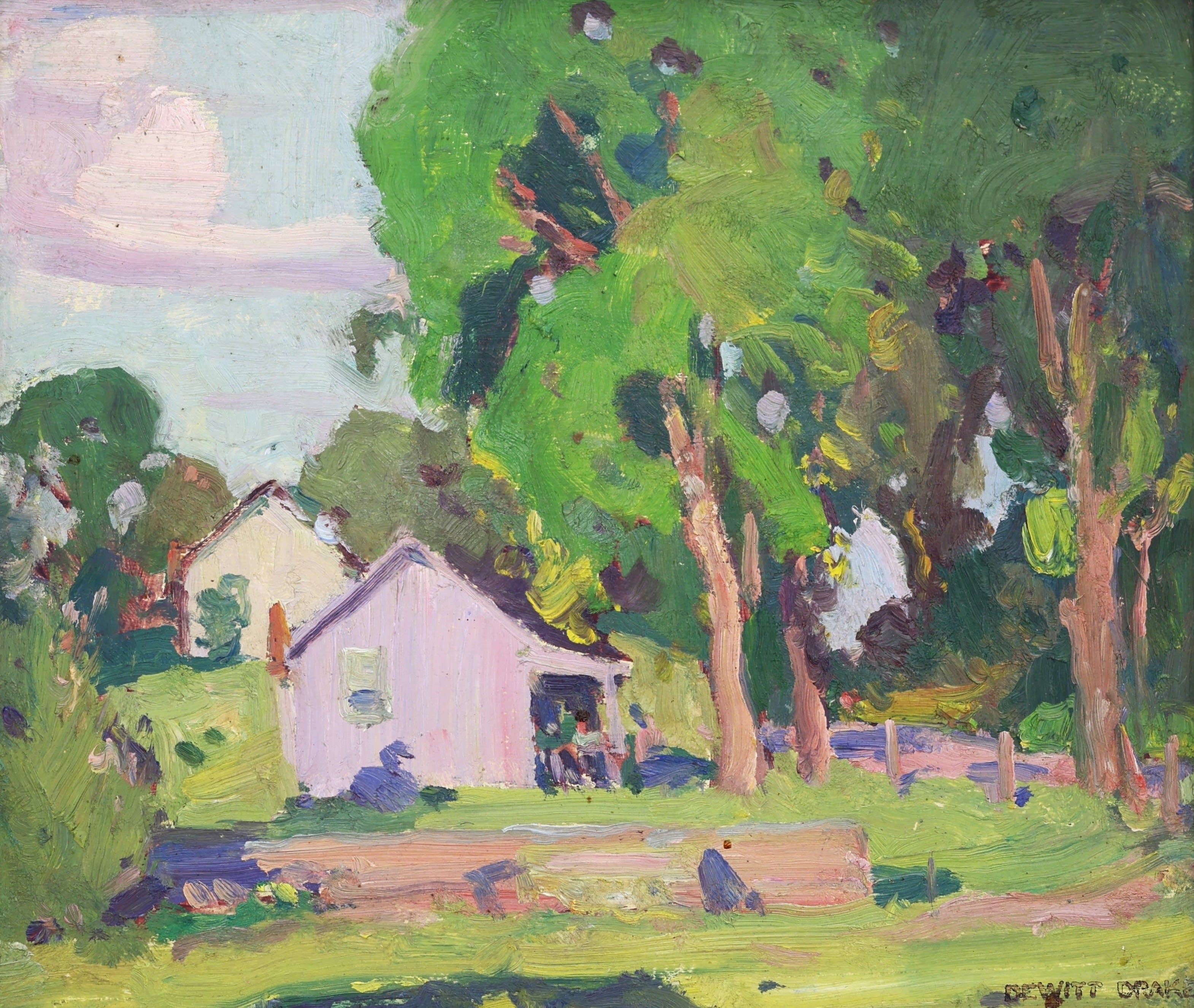Dewitt Drake (1884-1978) was a notable Canadian artist whose works are celebrated examples of the Canadian School of Art. His artistic style, reminiscent of John William Beatty and his circle, strongly reflected the Canadian Modernist trends and Post-Impressionist influences associated with the Group of Seven.

Dewitt Drake; Road Side Fruit Stand
Background and Early Life: Born in Dunnville, Ontario, Dewitt Drake was raised in a family with strong ties to the local Methodist Church, and a sister who later became a missionary in Japan. In his early years, Drake ventured to northern Ontario, lived in Fort William (now Thunder Bay), and even spent time in New York State. During this period, he identified himself as a "Printer" in official documents.
Marriage and Family: In 1914, Dewitt married Edith, and the couple welcomed their daughter Stella in 1916. His family life was a significant aspect of his personal journey, enriching his commitment to both his art and his loved ones.

Dewitt Drake; Farmhouse and Autumn Trees
Artistic Education and Career: Dewitt received artistic training at the Buffalo School of Art, part of the Albright-Knox Gallery, in 1912/1913. This period likely included his attendance at the influential Scandinavian Exhibition, attended by key figures like Lawren Harris and JEH MacDonald. He further honed his skills at the Art Students League in New York City in November/December of 1920 and possibly studied at another notable U.S. art school. His style was further influenced by the Group of Seven.
 Dewitt Drake; Figures on the Golf Course
Dewitt Drake; Figures on the Golf Course
Professional Life: Dewitt spent much of his professional life working at the Toronto Telegram newspaper, where he served as an ad compositor, type-setter, and illustrator. He retired in 1955 and was honored with a 50-year medal from the Typographical Union No. 91 in 1963 for his long service.
 Dewitt Drake; Old Pine Trees
Dewitt Drake; Old Pine Trees
Artistic Contributions and Exhibitions: Dewitt Drake's artistic output included a wide range of media, notably painting and etching. His works often captured the landscapes and scenes of Toronto, the greater Toronto area, and southern Ontario. Some of Drake's works bear exhibition labels from the Ontario Society of Artists Annual Exhibitions in 1920 and 1921, and he exhibited prints with the Canadian Painters-Etchers in 1957, 1959, 1960, and 1962. His graphic work evolved alongside the modern art trends in Canada during the 20th century.
Later Life and Legacy: Later committed to Whitby Hospital due to declining health, Dewitt Drake passed away in 1978. His friendships with artists like J.E.H. and Thoreau MacDonald, highlighted by a presentation inscription from the artists, underscored his integral role within the Toronto artist community. Despite the limited historical documentation, Dewitt Drake's contributions to art continue to be recognized for their depth and historical significance.


